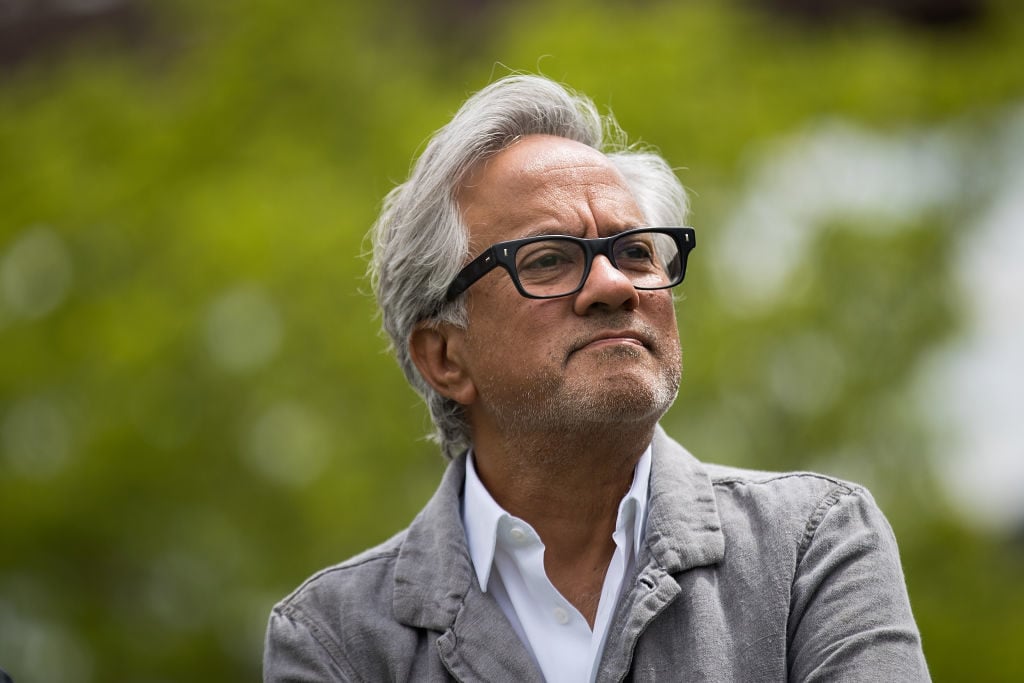British Indian artist Anish Kapoor is accusing Indian Prime Minister Narendra Modi of taking advantage of the global health crisis to push through controversial plans to redevelop the historic buildings of Delhi’s Central Vista, including the city’s Parliament House.
He criticized “India’s fascist government’s decision to push forward [with the project] now in the midst of the COVID-19 crisis” as a is a propagandistic strategy in a polemical op-ed for the Guardian.
The project, overseen by India’s public works department, is earmarked to cost 200 billion rupees ($2.64 billion), which some say would be better spent fighting the outbreak of the coronavirus.
Completed by British architects Edwin Lutyens and Herbert Baker in 1931, the Central Vista is the city’s main administrative district, running from the famed India Gate war memorial to Rashtrapati Bhavan, the prime minister’s residence.
The overall geometric design with its expansive boulevard is inspired by similar layouts in cities such as Paris, but the buildings in the area are distinctly Indian, with architectural features drawn from Hindu temples, Buddhist and Jain buildings, and red-stoned Mughal palaces, such as the city’s famed Red Fort.

Render of the design for the new parliament complex in Dehli’s Central Vista. Courtesy of HCP Designs.
“Love it or hate it, it is a grand vision of governmental power and the so called will of the people,” Kapoor wrote in a polemical op-ed for the Guardian. “In my view [they are] perhaps the grandest government buildings in the world.”
“The destruction of Lutyens’s Delhi is deeply misguided and comes out of Modi’s political fanaticism,” Kapoor adds. “This is not the redesign of buildings, it is instead Modi’s way of placing himself at the center and cementing his legacy as the maker of a new Hindu India.”
Kapoor also accuses the project’s architect, Bimal Patel of HCP Design, with having already destroyed the Indian city of Ahmedabad in a previous project.

Rashtrapati Bhavan, the prime minister’s residence in Dehli’s Central Vista. Photo by Sarah Cascone.
Kapoor is not alone in opposing the redevelopment, which was faces challenges in court, and the haste with which the plans were approved. Historians, architects, and urban planners have also pushed back on the plans, noting the site’s cultural importance.
“The historical significance of the Central Vista lies in its architecture, town planning, and politics,” Swapna Liddle, a historian at the Indian National Trust for Art and Cultural Heritage and an opponent of the redevelopment, told Scroll. “Its history is the history of India.”
A new conservationist group called Lokpath to fight the project, with cofounder Narayan Murthy distributing posters arguing that Modi should instead invest the money in the medical response to the global health crisis.

Opponent of the plan to redevelop Dehli’s Central Vista argue the money would be better spent on fighting the global health crisis. Image courtesy of Lokpath.
But those in favor of the redesign say it serves a practical purpose.
“From the day after independence, parliament was too small, because the existing building was the council house for the British raj,” Bobby Desai, director of design at HCP told the Guardian. “It was certainly never designed to be a parliament building for a country of 1.4 billion people.”












